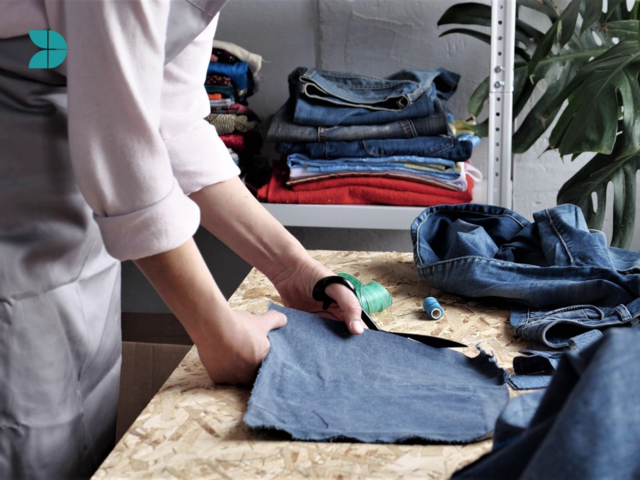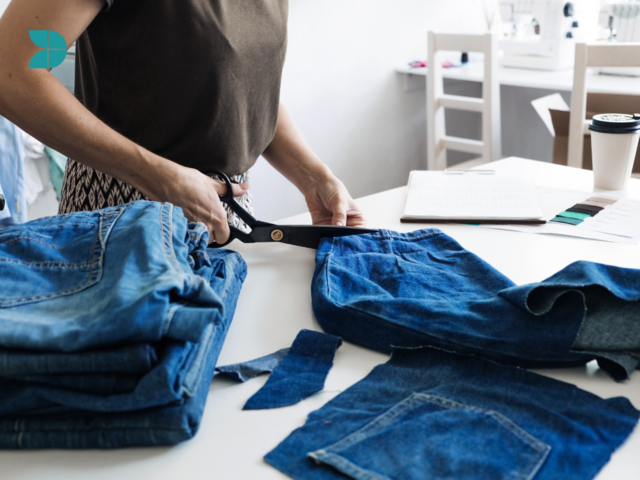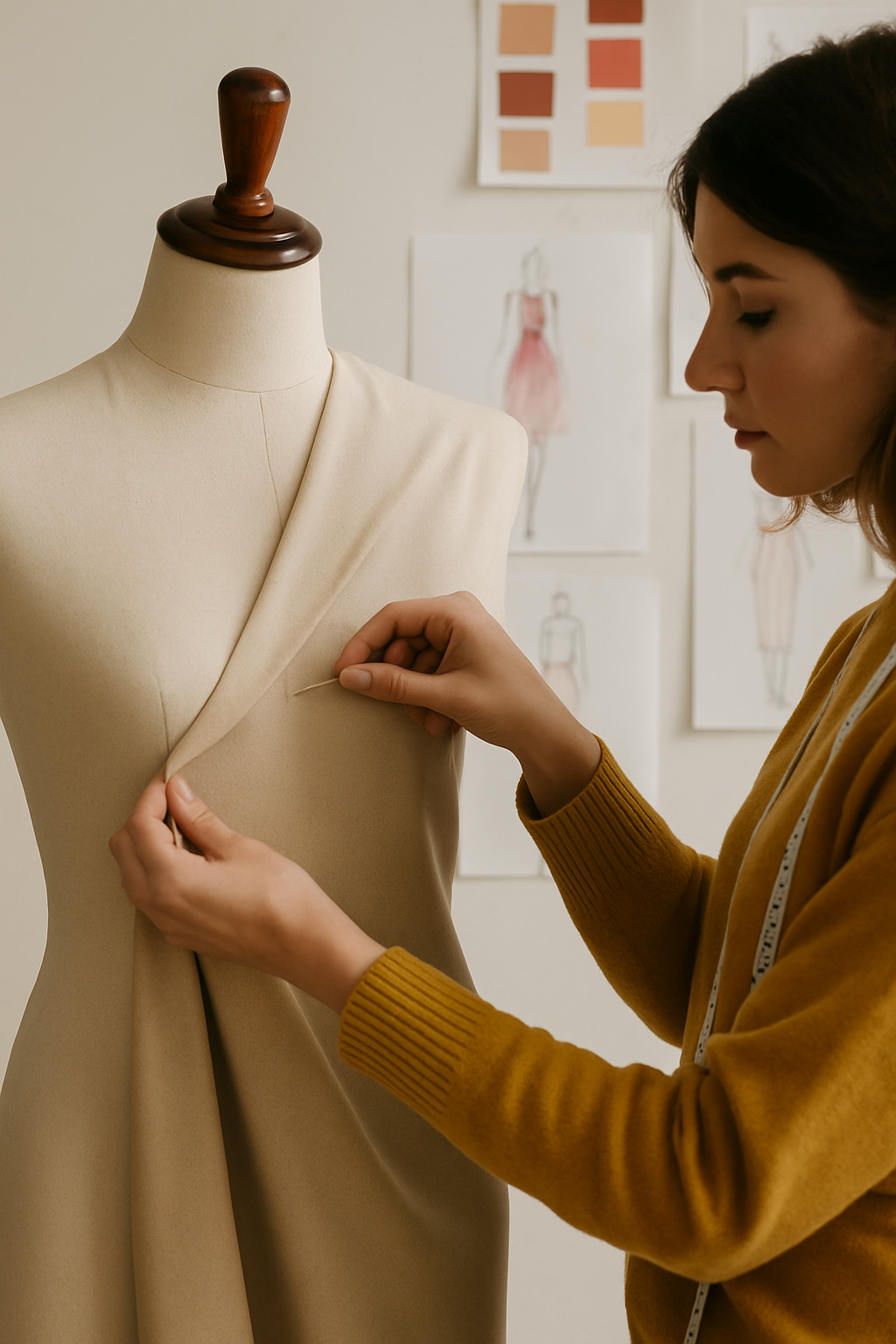The low cost and high turnaround of fast fashion has made it a billion dollar industry that is hugely popular both online and on the high street. The clothing is produced at such a rapid rate that the styles are generally right on trend and in high demand but, a nasty side effect of this culture of mass production, is the devastating impact it has on the environment. Not only are textile manufacturing processes contributing to climate change, but the disposal of these garments involves millions of tonnes of landfill. Landfills are piled high with mountains of fabric and textiles that are ironically, very difficult to destroy. These landfills are having a devastating impact on the climate and causing much debate.
As the negative impact of fast fashion becomes more apparent, designers and fashion brands are embracing the concept of sustainability in order to reduce their carbon footprint and create environmentally friendly designs. Thankfully, there is a growing consumer demand for environmentally conscious and ethical practices that has propelled sustainable fashion to the forefront of the fashion industry. We will investigate the principles and practices underlying sustainable fashion, providing valuable insights and actionable tips for aspiring designers and fashion enthusiasts.

Sourcing and material selection
The careful selection and sourcing of materials is the first step towards creating a culture of manufacturing clothing responsibly. Designers can significantly reduce their environmental impact by using sustainable fabrics and textiles. Organic and natural fibres, such as organic cotton, hemp, and linen, are superior to conventional cotton which requires massive amounts of water and pesticides. These fibres degrade naturally and have a low carbon footprint.
In addition to organic fibres, recycled and upcycled materials provide a unique opportunity to reduce waste while giving existing resources new life. Upcycling is the process of repurposing old clothing or textiles into new items that add value while reducing landfill waste. For example, recycled polyester can be made from plastic bottles, reducing the need for virgin materials.
Another critical factor in sustainable fashion is ethical sourcing. Working with fair trade organisations, local artisans, and ethical manufacturers ensures that the manufacturing process adheres to ethical standards. This approach benefits communities while protecting them from exploitative labour practices.
Sustainability design principles
Sustainable fashion encompasses the entire design process, not just material selection. Designers can reduce waste and create timeless, versatile pieces by employing thoughtful design principles.
Waste reduction begins with the pattern-making process where zero-waste pattern techniques make efficient use of fabric, resulting in little to no waste. Designers can strategically design garments and reduce waste by using the entire width and length of fabric.
Sustainable fashion also requires modular and adaptable designs. Creating garments that can be altered or adjusted to fit various styles or sizes extends their lifespan and reduces the need for frequent replacements. Designers can contribute to a more sustainable wardrobe by embracing versatility.

Sustainable manufacturing and production
Responsible production and manufacturing processes are the foundation of a sustainable fashion industry. The entire life cycle of the garment must be considered. Energy-saving practices, such as using renewable energy sources and optimising machinery will contribute to lower carbon emissions. Manufacturers can also employ water-saving techniques and recycled water to reduce water consumption.
It is essential to work with ethical production partners to ensure fair labour practices and transparency throughout the supply chain. Designers can contribute to positive social change and uphold ethical standards in the fashion industry by collaborating with manufacturers who prioritise worker welfare.
Packaging and distribution considerations
Packaging and distribution are huge contributors to the carbon footprint but there are cleaner alternatives that the industry can access. Designers can minimise waste by using recyclable and biodegradable materials plus minimalist and lightweight packaging helps reduce carbon emissions generated during transportation.
Designers can also reduce the distance their products will travel by establishing local production and distribution networks. The carbon emissions produced from long-distance shipping is one of the most damaging aspects of fashion design but supporting carbon offset initiatives can help to mitigate the environmental impact of transportation.

Increasing the durability of fashion products
Well-made quality clothing not only reduces the need for frequent replacements, but also contributes to a more sustainable wardrobe in general. By creating timeless designs with excellent craftsmanship, designers can encourage customers to invest in pieces that will stand the test of time. Promoting durability and quality is an effective way to encourage environmentally friendly fashion practices.
It is also important to educate consumers on garment care. Providing washing instructions such as using cold water and eco-friendly detergents will help reduce energy consumption and water waste. Proper storage and preservation techniques will also help fashion products last longer. When people invest in a quality item, they tend to have a higher opinion of it and therefore take better care of the garment whereas fast fashion is treated as disposable.
Partnerships and the circular economy
Collaborating with like-minded brands and participating in collaborative efforts is an effective way to support sustainable fashion. By banding together as a collective, designers can encourage sustainable practices and set an example to others. Collaborative capsule collections that incorporate eco-friendly design principles can inspire consumers to embrace sustainability. Designers can also contribute to the circular movement in fashion by establishing take-back programs and participating in secondhand markets. Fashion products can be repurposed and given a second life thanks to recycling and upcycling initiatives.
Climate change is dangerously close to tipping point and circular, sustainable fashion is a crucial step in the right direction. Designers can make a positive impact on the fashion industry by implementing eco-friendly design principles, better material selection and sourcing, implementing responsible production methods while promoting circularity. It is our collective responsibility to embrace sustainable fashion practices and to pave the way for a future in which fashion and ethics work together in harmony.
Keep an eye out for future blog posts where we will delve deeper into related topics and provide additional insights into the world of sustainable fashion.
We offer a variety of courses at the Fashion Design Academy and we work hard to empower aspiring designers to embrace sustainable fashion and create eco-friendly designs. Our courses provide students with the knowledge and skills they need to make a positive impact in the fashion industry through hands-on training and expert guidance. Join us in shaping the future of fashion through environmentally friendly practices. Enrol in our courses today to start your path to a more sustainable and ethical fashion design career.

